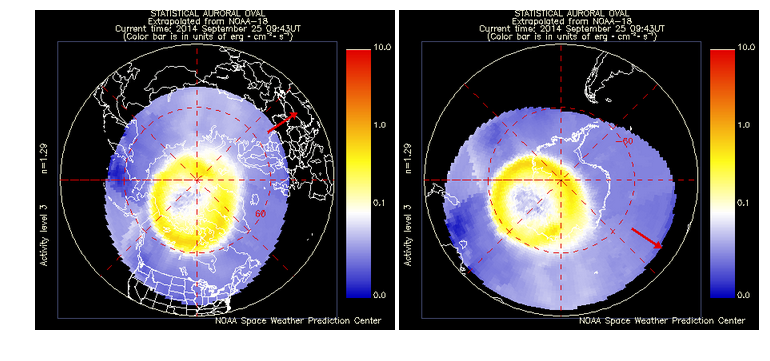
Where can one see the Northern Lights
You can see them regularly in Iceland, Northern Norway, Finland, Sweden, Siberia, Canada, Alaska and Greenland. This is due to the so called auroral ovals, that are located above theses regions (see left part of the picture below). In rare occasions Northern Lights can be seen in places much more south. In general the visibility of Northern Lights is better in places with less light pollution. Also cloud coverage influences the visibility of Northern Lights and hence where you can see them.
 (Source: http://www.spaceweatherlive.com/en/auroral-activity/auroral-oval)
(Source: http://www.spaceweatherlive.com/en/auroral-activity/auroral-oval)
The locations from where Northern Lights can be seen actually changes from day to day. In case of high aurora activity caused by an extensive solar wind activity Northern Lights can be seen much more south than on other days. A method to determine on which locations Northern Lights can be seen is connected to the Kp-index (see here for an explanation of this index). The higher this index is the more south the potential visibility is. However, it is important to notice that it is not the regular geographical latitude that matters, but the corrected magnetic latitude. An overview over the corrected magnetic latitude of different places can be found here. On this page you can also find a table that shows you which value of the Kp-index is needed for the possibility to spot Northern Lights at different magnetic latitude. In Reykjavik, Iceland for example a Kp-Index of 2 is needed.
Sources:
http://pwg.gsfc.nasa.gov/polar/EPO/northern_lights/aurora_broch.pdf
http://www.swpc.noaa.gov/Aurora/

